
Welcome Readers
Here you'll find insightful articles, tips, and templates on agile coaching and visual thinking techniques, all designed to help you succeed. Whether you're looking to stay up-to-date on the latest trends and best practices, gain insights from thought leaders in your industry, or simply expand your knowledge, my blog has something for everyone.

The Power of Psychological Safety: Creating a Stronger and More Inclusive Team Culture with a Psychological Safety Canvas
A psychological safety canvas is a visual tool that helps team members identify and discuss important aspects of psychological safety, including their shared values, behaviours, and expectations. This tool can be used to guide discussions around creating a positive and supportive team culture, where all members feel heard, valued, and respected. By using a psychological safety canvas, teams can foster a culture of trust and respect, which can lead to better outcomes for the team as a whole.
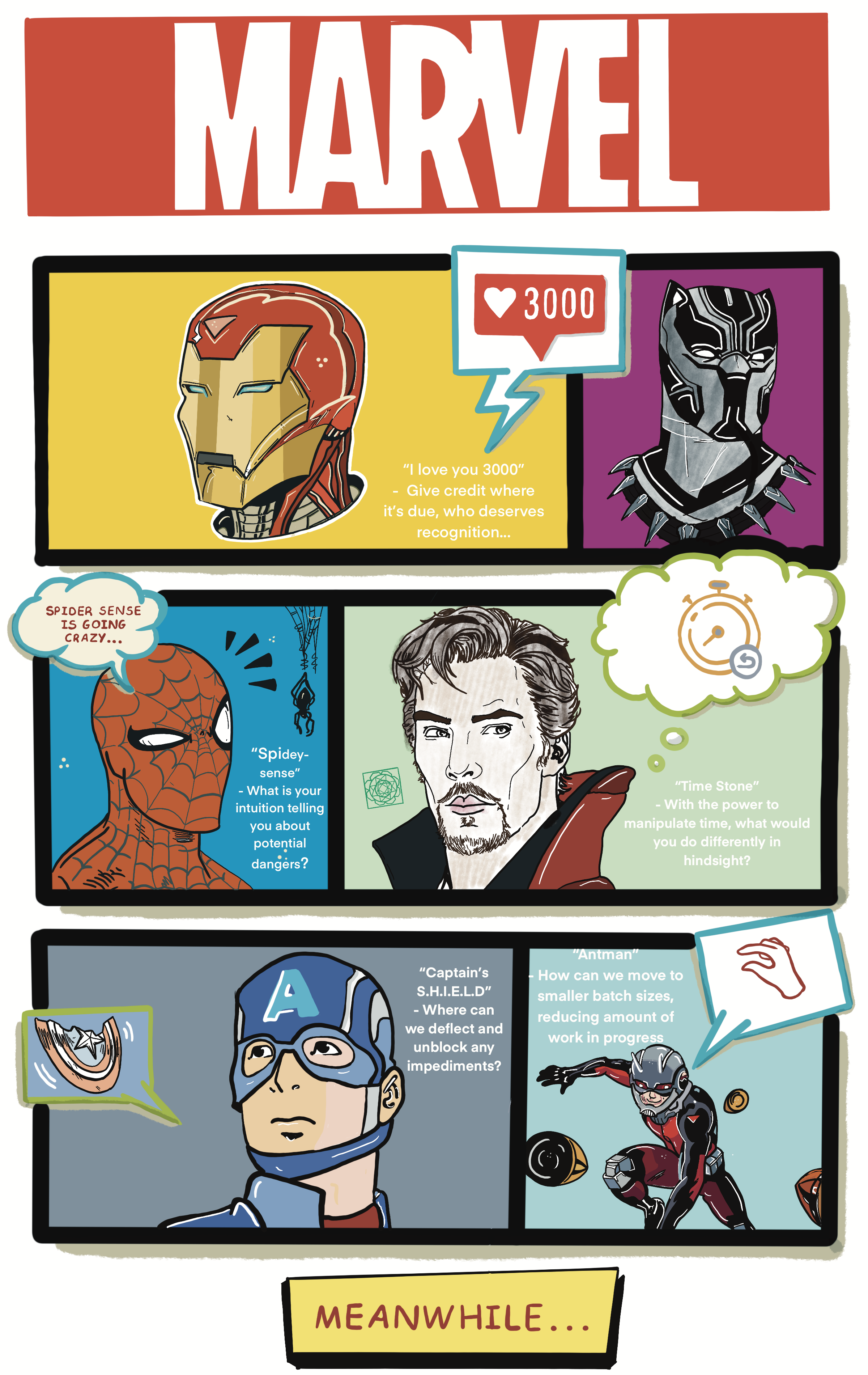
Retrospective Assemble! Reflecting on Your Sprint Through a Marvel-Inspired Lens
Do you ever feel like your sprint retrospectives could use a boost? Maybe you're stuck in a rut, repeating the same old discussions without seeing any real progress. If that sounds familiar, it's time to assemble your team and take a fresh approach to your retrospective. By drawing inspiration from the world of Marvel superheroes, you can inject some excitement and energy into your meetings, and identify new areas for growth and improvement.
In this guide, we'll explore how you can channel the traits of Iron Man, Spider-Man, Captain America, Black Panther, Dr. Strange, and Antman to supercharge your sprint retrospectives. From recognising the hard work of your colleagues to becoming more tech-savvy and innovative, each superhero offers unique insights and strategies to help you achieve success in your projects.
So put on your superhero cape and get ready to take your sprint retrospectives to the next level. With a little inspiration from the Marvel universe, you'll be able to identify new opportunities for growth, and create a more productive and successful work environment.

Harry Potter Retrospective
In this Harry Potter retrospective, delve into the beloved world of wizardry and uncover the magic behind J.K. Rowling's iconic series. From the characters and themes to the intricate plotlines and memorable scenes, join us on a journey through the spellbinding universe of Harry Potter. Discover the impact of this timeless tale on pop culture and why it continues to captivate audiences of all ages.
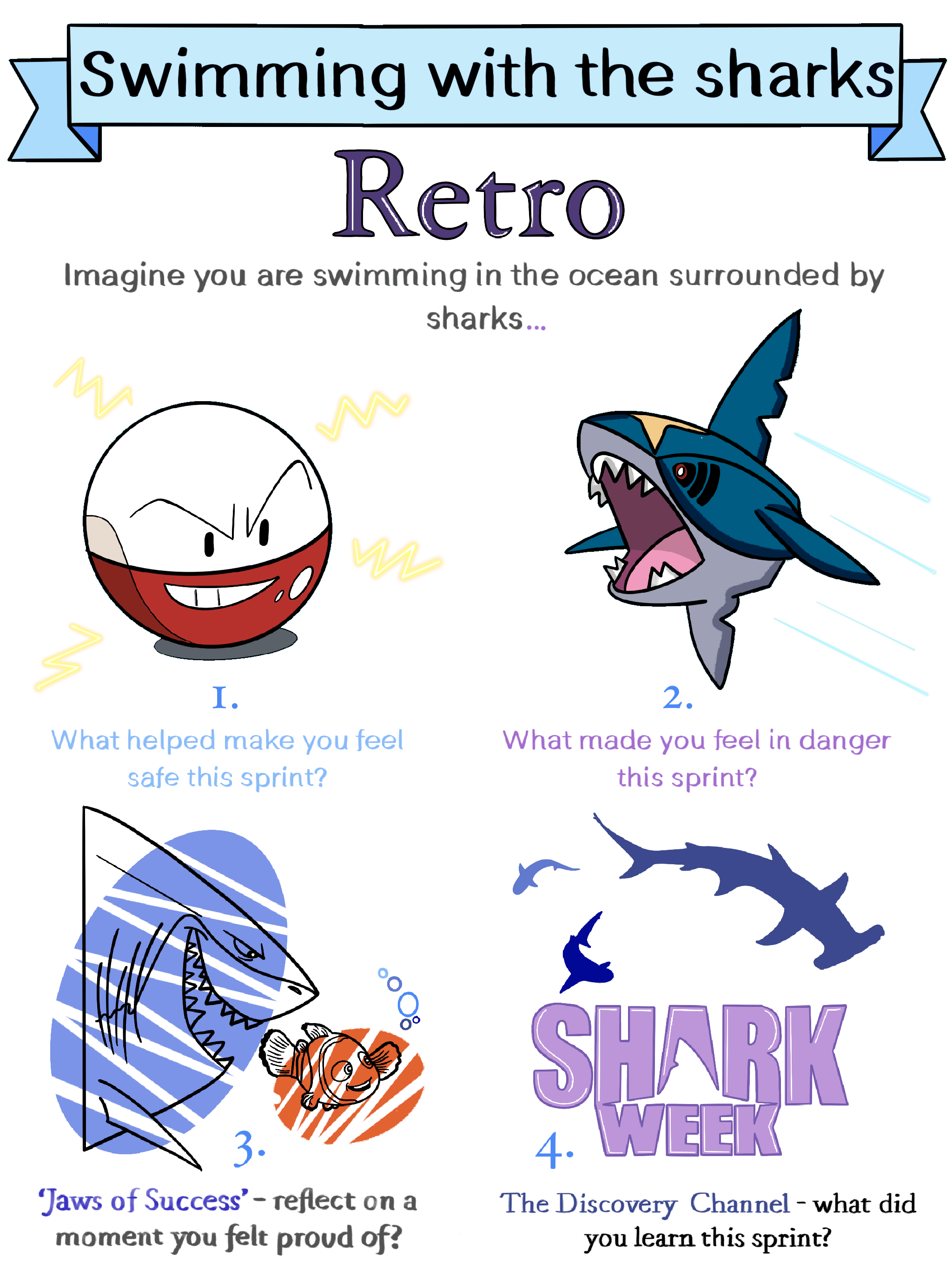
Reflecting on the Sprint: Dive into a Shark-Themed Retrospective
Retrospectives are an essential tool for any Delivery Manager or team lead looking to improve their team's performance. But traditional retrospective templates can feel stale and uninspiring. Why not mix things up with a shark-themed retrospective?
This fun and engaging template features four sections, each with a corresponding shark illustration and space for reflection. In the "feeling safe" section, you can consider what made you and your team feel secure during the sprint. In "feeling in danger," you can identify any potential roadblocks or risks that arose. The "jaws of success" section allows you to recognize and appreciate any team members or successes that deserve credit, while the "Shark Week Discovery Channel" section encourages you to reflect on what you learned during the sprint.
By using this unique and memorable template, you can inject some fun into your retrospectives and approach reflection in a fresh way. Give it a try and see how it impacts your team's performance and engagement.
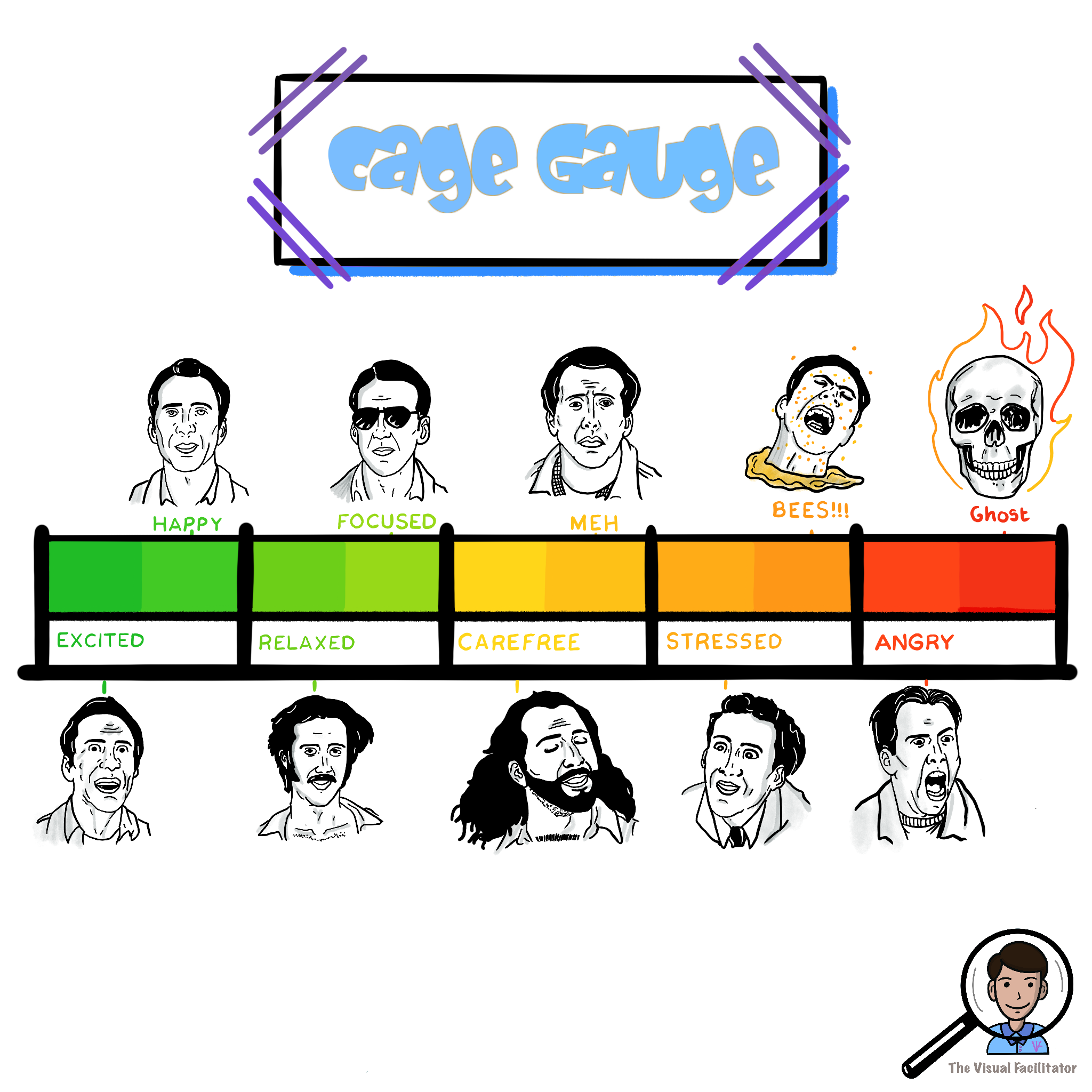
Revolutionise Your Virtual Meetings With The Cage Gauge
Nic Cage Gauge is a unique and innovative tool that can revolutionise the way you interact in virtual meetings and icebreakers. By using the emotional range of Hollywood icon Nicolas Cage as a guide, you can express a wide range of emotions and engage your colleagues in a fun and creative way. Whether you're using Nic Cage Gauge to break the ice or to add a bit of humor to a presentation, this tool is sure to bring a new level of energy and engagement to your virtual interactions. So why not give it a try and see how Nic Cage Gauge can help you enhance your virtual meetings?

Visual Thinking Made Simple: How Ted Wujec's 'How to Draw Toast' Can Unlock Your Creative Potential
Ted Wujec's "How to Draw Toast" is a powerful visual thinking tool that can help individuals and teams break down complex problems into simple, visual components. In this blog post, we'll explore the key principles behind this method and how it can be used to unlock your creative potential. From breaking down basic objects into their components to creating a visual language of symbols and icons, we'll walk you through the steps of this powerful problem-solving tool. So whether you're a designer, an innovator, or just someone who wants to think more creatively, read on to discover how "How to Draw Toast" can help you visualize and solve complex problems.
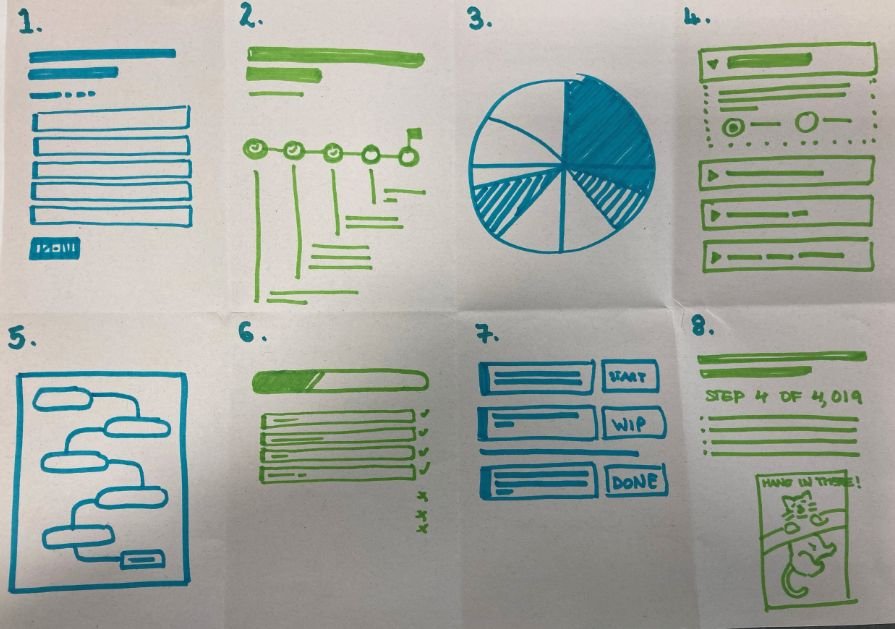
Crazy 8's: How this Ideation Method Can Supercharge Your Design Process
Crazy 8's is a rapid sketching exercise that can help design teams generate a large number of ideas quickly and effectively. In this blog post, we'll explore how this ideation method can supercharge your design process and why it's so effective.

From Forming to Performing: Understanding Tuckman's Model of Team Development
Dr. Bruce Tuckman's development model, also known as the Tuckman model, is a widely recognised framework for understanding the stages of group development. According to Tuckman, all groups go through four distinct stages: forming, storming, norming, and performing.
In the forming stage, group members come together and begin to get to know each other. This stage is characterized by polite and superficial interactions as group members try to establish a sense of safety and belonging.
As the group becomes more comfortable with each other, they move into the storming stage, where conflicts and disagreements may arise as individuals assert themselves and vie for power or influence within the group. This stage can be challenging, but it is essential for the group to work through these issues in order to move forward.
Once the conflicts have been resolved, the group moves into the norming stage, where they establish shared values, goals, and norms for behavior. This stage is marked by increased cooperation and collaboration as group members work towards a common purpose.
Finally, the group reaches the performing stage, where they are able to work together effectively and efficiently towards their shared goals. This stage is characterized by high levels of productivity, creativity, and satisfaction among group members.
Understanding the Tuckman model can help you better navigate group dynamics and build more effective and productive teams. By recognizing which stage your group is in and taking appropriate actions, you can help your team move through the stages of development and achieve success
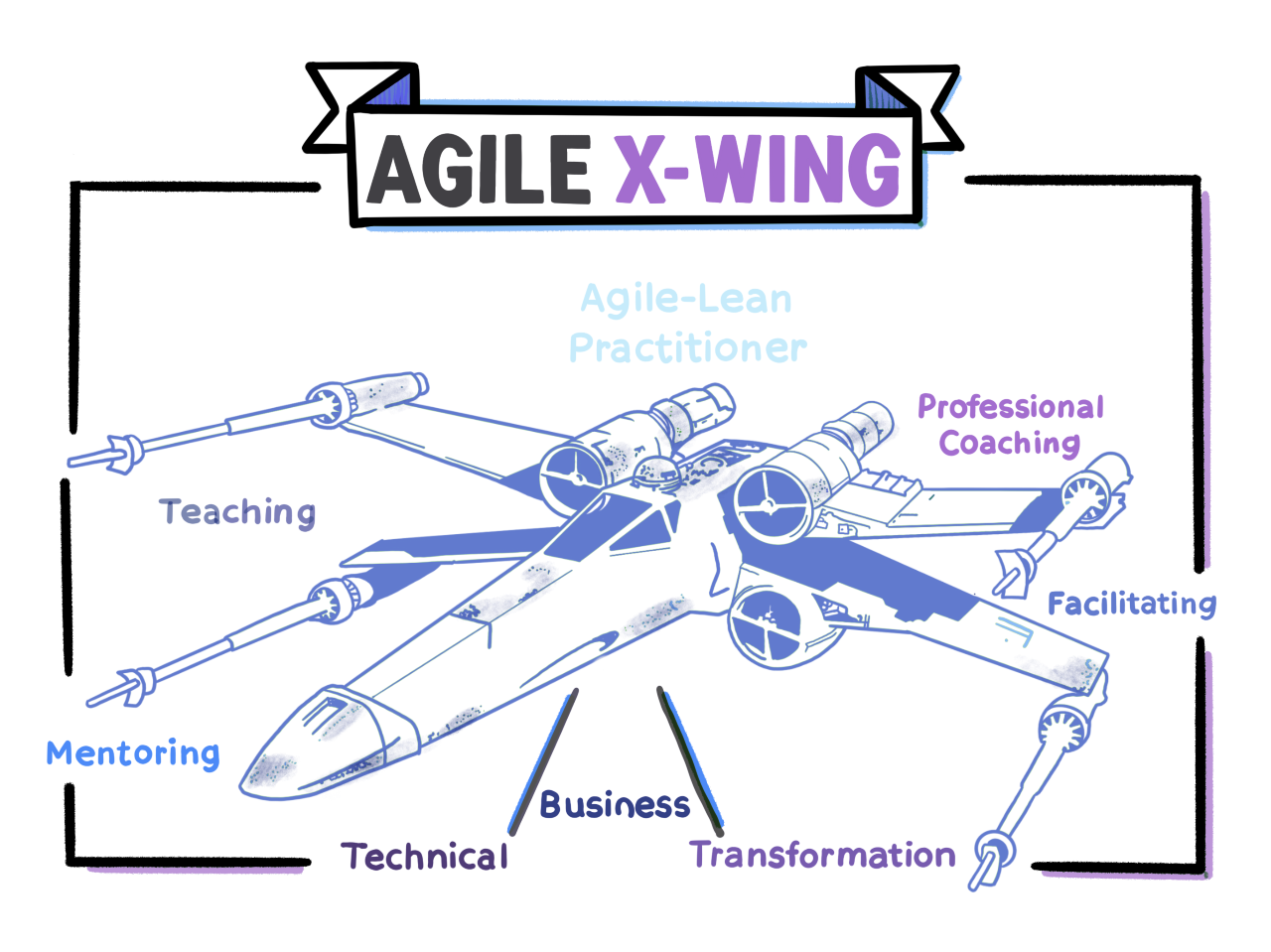
Agile X-Wing Coaching Framework
The Agile Coaching Competency Framework is a valuable tool for Agile coaches to evaluate their skills and competencies. It provides a clear roadmap for Agile coaches to develop their skills and become more effective in their roles.
The framework outlines the competencies required for Agile coaching, such as facilitation, mentoring, coaching, and teaching. By using the Agile Coaching Competency Framework, coaches can identify their strengths and weaknesses and focus on areas that require improvement. Ultimately, the framework helps Agile coaches to deliver better results for their teams and organisations.
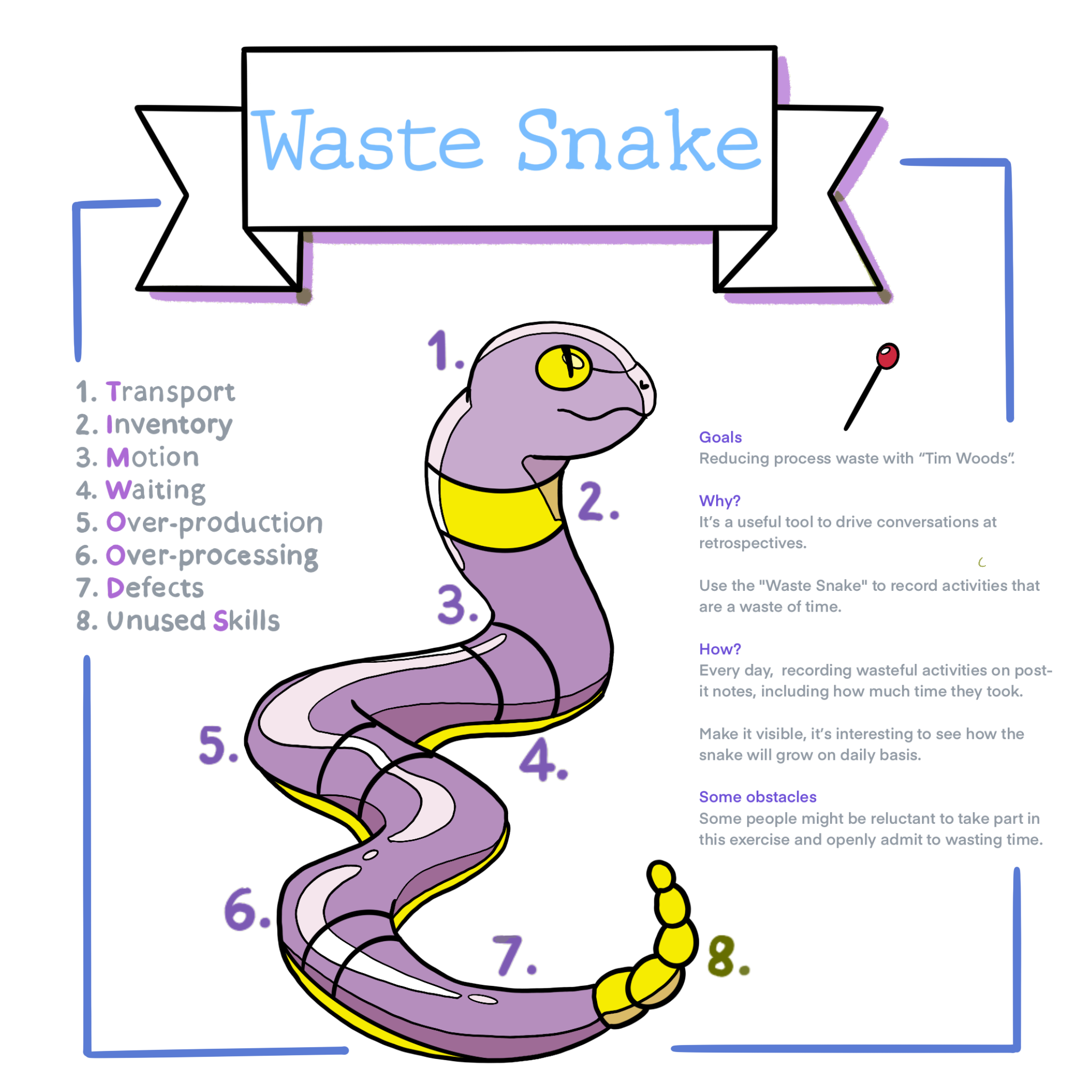
The Waste Snake
𝐖𝐚𝐬𝐭𝐞 𝐒𝐧𝐚𝐤𝐞 🐍 and 𝐓𝐈𝐌 𝐖𝐎𝐎𝐃𝐒
It’s a simple formality, when you are doing tedious low-value work, or waiting idly you write up a sticky note about it.
You select a central and visible place to record the type of waste so others can see it. Periodically you look at the visual and see what low-value or no-value tasks have been occupying the team’s time.
When you decide enough is enough, you allocate time to fixing the problem - reducing or eliminating the waste and wait times. I like to affinity sort, categorise into ‘insights/themes’, dot vote, and then explore potential experiments.
The real goal is to raise awareness of waste as the opposite of delivering value. It’s a critical tool to help empower teams who can control their own processes to identify non-value-adding wastes and discover ways to reduce or eliminate them.
